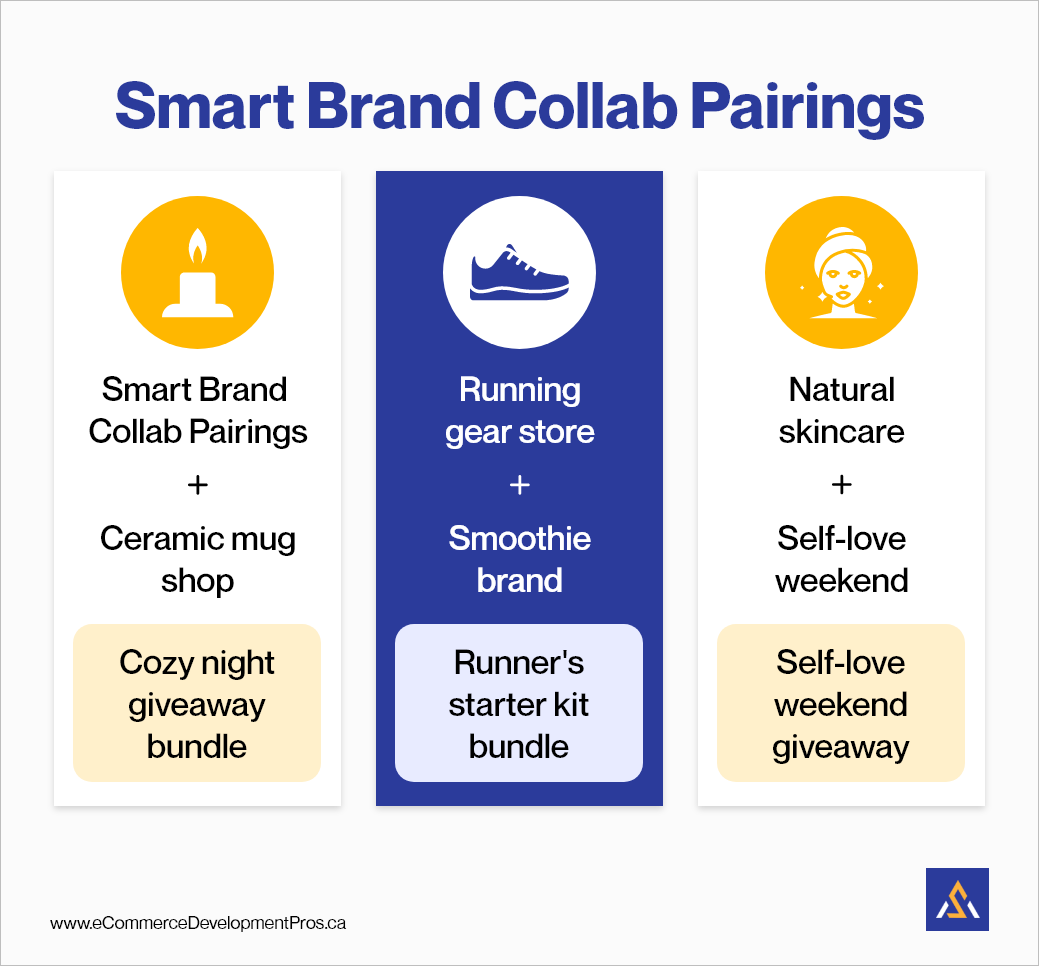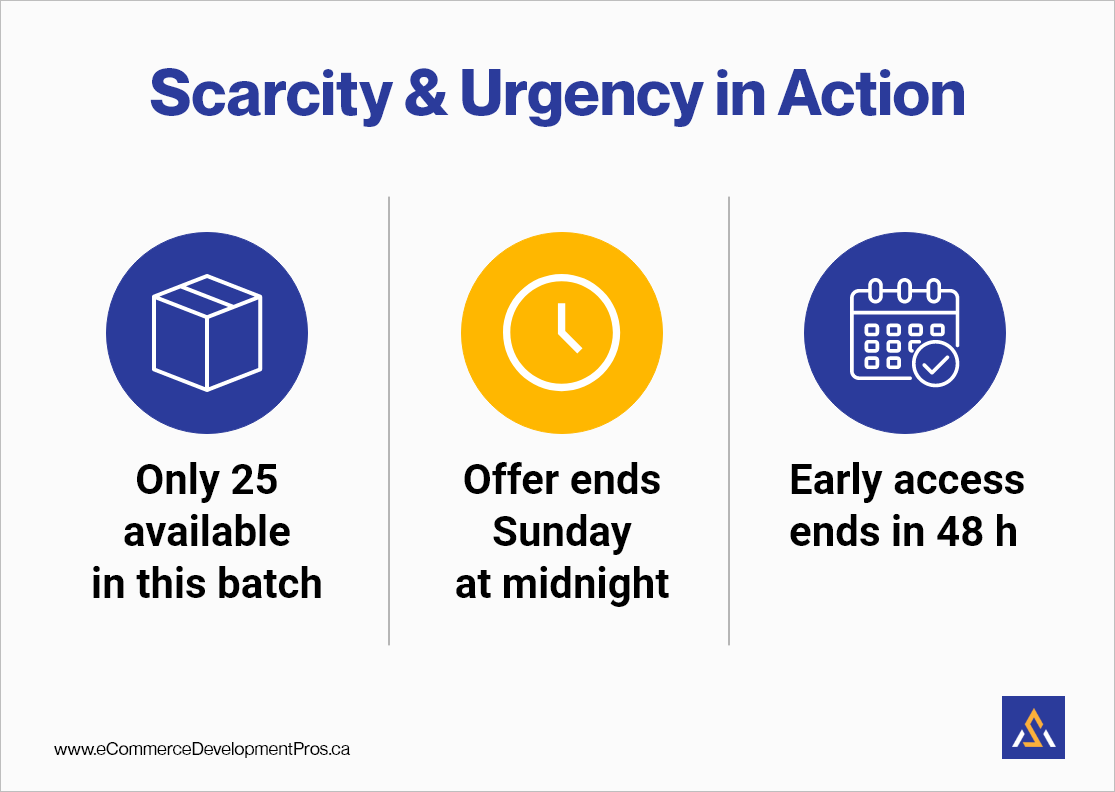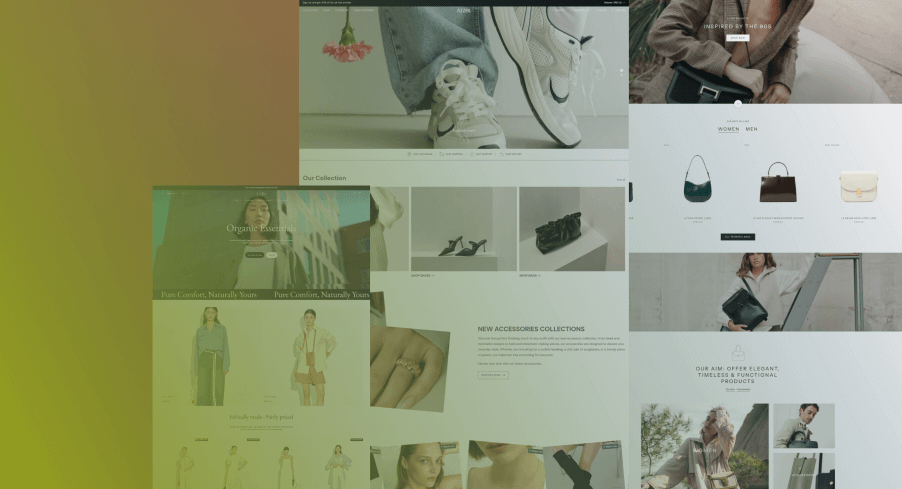- The Post-Launch Reality Check
- 👀 Don’t Chase Likes👍— Chase Real Momentum
- 💡 What This Post Is Really About
- 13 Ways to Get Your First 100 Customers (Without Paid Ads)
- 1. Start With Your Network (But Don’t Be Cringey)
- Why This Actually Helps
- 2. Join Niche Communities & Give Before You Take
- 3. Cold Outreach—Without Being Weird About It
- 4. Tap Into Discovery Platforms (Yes, Even for Online Stores)
- 5. Partner With Micro-Influencers or Nano-Creators
- 6. Create Content That Actually Converts
- 7. Leverage Referral Programs
- 8. Turn Early Buyers Into Brand Evangelists
- 9. Tap Local or Niche Events (Even Virtual Ones)
- 10. Create a “Founding Customer” Offer
- 11. Collaborate With Complementary Brands
- 12. Use Scarcity & Urgency Smartly
- 13. Document Your Journey Publicly
- Lessons From Founders Who’ve Done It
- 1. Notion: Community-Led Growth
- 2. Buffer: Validate Before You Build
- 3. Pantee: Sustainable Fashion with a Story
- Start Small, Start Now
- You’ve Got This
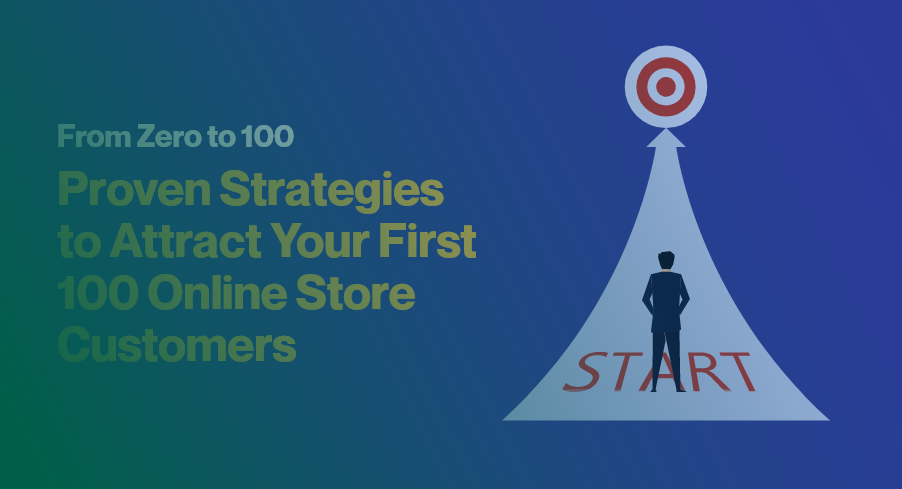
The Post-Launch Reality Check
You’ve launched. You’ve got a product. Your website looks great.
But here’s the part no one tells you: launching is the easy part—getting actual people to buy is where the real work begins.
Most store owners instinctively think, “Let’s run Google Ads.”
But if your budget is tight—or you’re not ready to burn cash with unknown ROI—there’s a better way – a eCommerce Launch Strategy to attract first 100 customers.
In this post, I’ll walk you through 13 practical, non-paid strategies that help online store founders and ecommerce creators get their first 100 customers—fast, lean, and without gimmicks.
Don’t Chase Likes — Chase Real Momentum
When you launch your online store and start putting yourself out there, it’s easy to feel like you’re shouting into the void.
- You post on Instagram.
- You drop a link in a Facebook Group.
- You send a launch email to friends.
And… yet, some likes or comments but no sales.
But here’s the thing most people don’t realize:
Just because someone doesn’t “like” your post doesn’t mean they didn’t read it.
You might not see it, but people are watching. Some are quietly interested.
And that silent momentum?
It adds up!

💡 What This Post Is Really About
This isn’t a list of viral hacks or growth gimmicks.
This is about getting your first 100 real customers—even if no one’s clapping for you (yet).
The 13 strategies below are designed to help you:
- Make your first few sales without ads
- Build early trust and buzz in your niche
- Turn quiet attention into action
No audience? No problem. Let’s get you moving anyway.
13 Strategies to Get Your First 100 Customers (Without Paid Ads)
1. Start With Your Network (But Don’t Be Cringey)
When you’re starting from zero, your warmest leads are already in your phone, inbox, and social feeds.
The mistake most people make?
They either don’t reach out at all or do it in a way that feels desperate or pushy.
Here’s how to do it the right way:
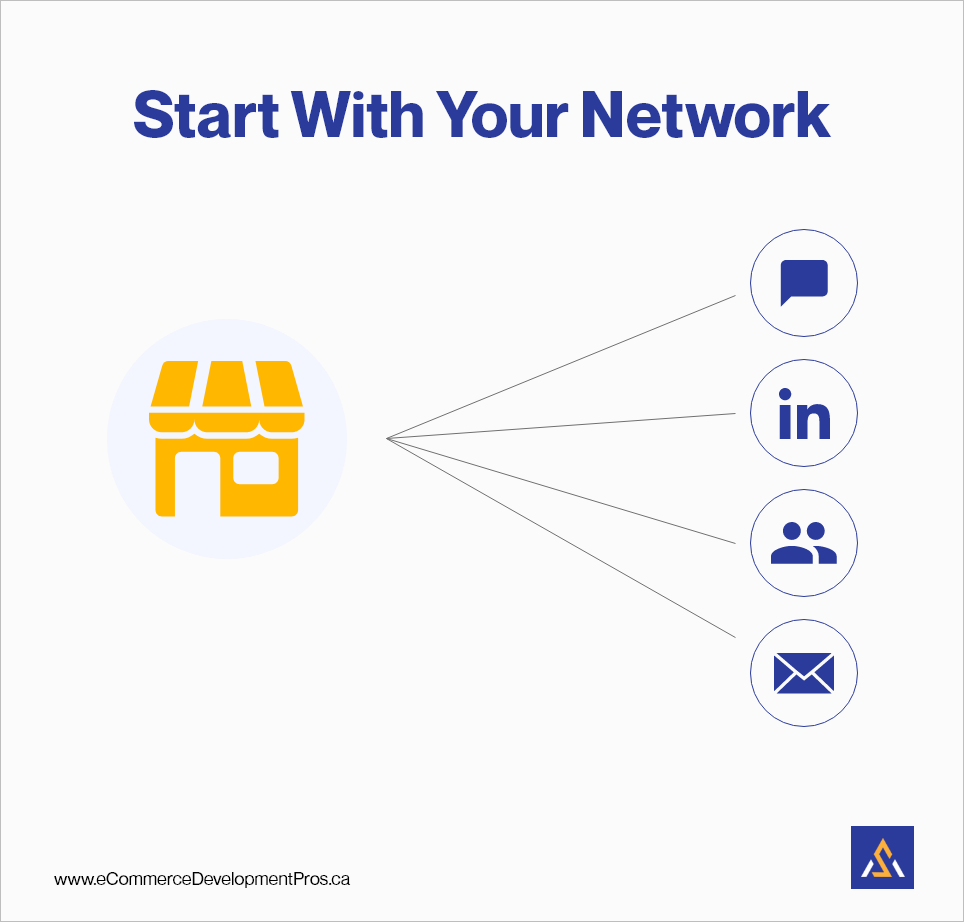
Why This Actually Helps
- Reach out personally to friends, family, former coworkers, industry contacts, old classmates, and even friendly LinkedIn or Instagram followers.
- Use 1:1 messages, not mass posts (at least at first).
- Position it as an invitation or heads-up.
Sample Message Templates:
For close friends/family:
Hey [Name],
I just launched my online store! It’s about [description of your products].
No pressure at all, but if you or someone you know is into that kind of thing, I would love for you to check it out:
[link]
For LinkedIn/former colleagues:
Hey [Name],
Hope you’ve been doing great! I recently launched an online store featuring [brief product description], and thought it might be something you’d enjoy or find interesting.
Would love to hear what you think!
[link]
For social media post:
Small update: I just launched [store name]!
It’s been a wild ride getting it live. If you’re into [target niche], I would love for you to check it out—or forward it to someone who might like it.
Thanks for the early support 🖤
[link]
Extra Strategies That Work:
- Include a personal discount code for their network only (e.g., “FRIENDS15”).
- Ask for shares, not purchases: “Know anyone who’d love this?”
- If they buy, send a thank-you note or DM. Consider including a surprise freebie or a handwritten note to build loyalty.
Why This Actually Helps
- These people already trust you.
- Even if they’re not your ideal customers, they can connect you to people who are.
- It’s not about converting everyone—it’s about getting the ball rolling with your first 5–10 customers, reviews, and referrals.
2. Join Niche Communities & Give Before You Take
When you’re unknown and unproven, one of the fastest ways to build visibility and trust is by embedding yourself in communities where your ideal customers already hang out.
But here’s the catch:
If you show up just to promote your product, you’ll get ignored—or worse, banned.
The key?
Lead with value, not your link.
Start by doing this:
- Identify online spaces your audience frequently visits, such as:
- Facebook Groups
- Subreddits
- Discord servers
- Slack communities
- Indie Hacker-style forums
- Spend the first few days actively engaging—not lurking, not selling.
- Answer questions.
- Ask thoughtful ones.
- React and comment on others’ posts.
- Once you’ve contributed, share genuinely helpful content that happens to include your store or product.
How to Soft-Pitch Without Being Salesy:
Instead of:
“Hey, I just launched my store—go check it out!”
Try:
“I recently launched a zero-waste kitchen product after struggling to find something affordable and functional. Happy to share lessons from setting up my first Shopify store if anyone’s curious.”
Or post something like:
“Here’s how I sourced sustainable packaging for my online shop (and what I’d do differently next time).”
Then, respond in comments if people ask questions or want the link.
Example Scenarios:
Selling pet gear?
Join dog training or pet care Facebook Groups. Share training tips, product picks, or funny pet stories before ever posting about your brand.
Selling home décor?
Find Reddit threads on r/HomeDecor or r/DIY and comment with inspiration, even linking to blog posts you write about styling tips (with subtle product mentions).
Why This Earns Attention (not Eyerolls)
- You’re borrowing trust from the community by becoming a valuable voice—not a drop-in advertiser.
- People notice and remember contributors. If your product fits their needs, they’ll ask you about it.
- It helps you build social proof and early fans organically.
Pro Tip:
Once you’re active in a few spaces, create a lightweight “value-first” post calendar. For example:
- Mon: Comment on 2 threads
- Wed: Share 1 helpful tip or story
- Fri: Answer 3 questions or offer feedback
Consistency builds recognition, and recognition builds conversions.
3. Cold Outreach—Without Being Weird About It
Cold outreach has a bad rap—and fair enough. Done wrong, it feels spammy.
But if done right?
It’s one of the fastest ways to get real customers, early feedback, and momentum—especially when no one knows you yet.
The key?
Be helpful, human, and relevant.
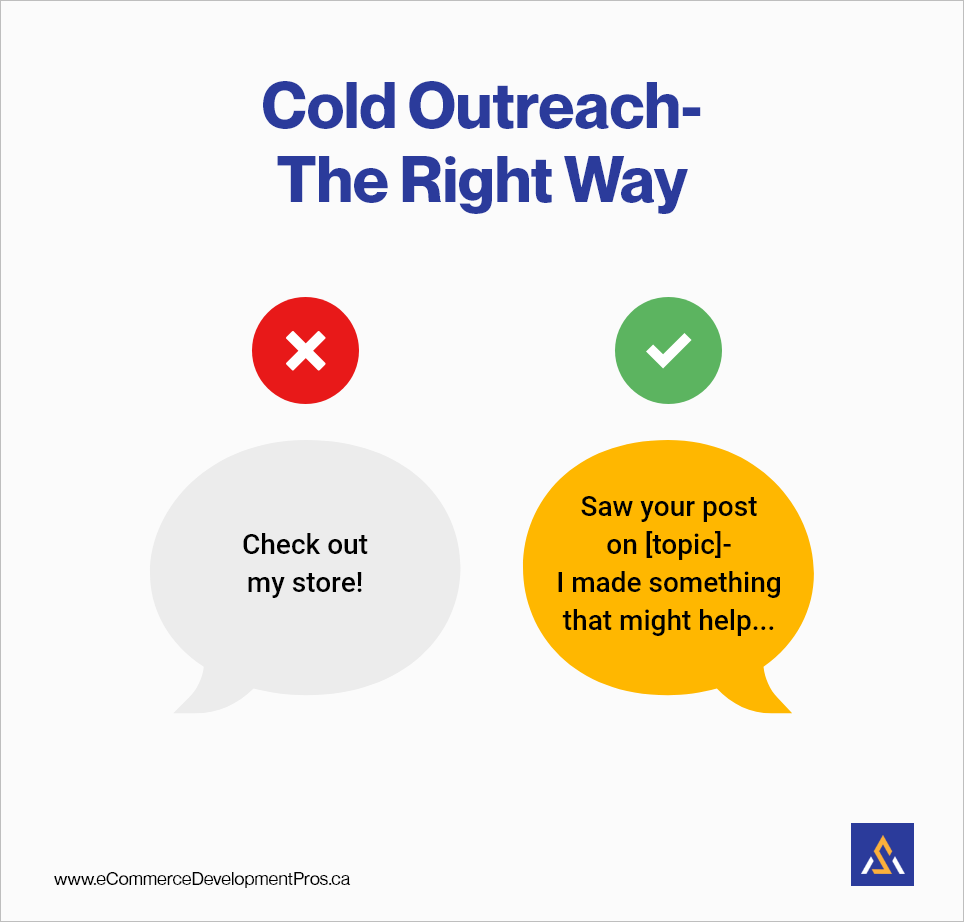
How to Reach Out Without Being Spammy
- Identify people who are already interested in what you’re offering.
These might be:
- Instagram followers who engage with similar brands
- Newsletter writers in your niche
- Customers of a competitor who publicly posted feedback
- People asking for recommendations in forums or Twitter threads
- Use tools like:
- Keep your message short, relevant, and helpful.
Message Template You Can Use:
Subject: Quick question about [niche/problem]
Hey [Name]
I saw your post about struggling to find a [problem your product solves], and I totally relate.
I recently launched a [product type] that helps with exactly that (built it after dealing with the same headache).
No pressure at all, but happy to send you a free sample or give you a first-look if you’re curious.
Either way, love what you’re doing— thanks for reading!
– [Your Name]
The Golden Rule of Cold Outreach:
Offer before you ask.
Give value first—a tip, a sample, a resource, even a thoughtful compliment.
This builds trust. And when people feel seen and not sold to, they’re way more likely to respond (or buy).
The Psychology Behind it
- You’re not relying on luck—you’re hand-picking high-fit potential customers.
- Most people don’t get thoughtful, helpful DMs or emails—so yours stands out.
- It helps you build 1:1 relationship that often lead to early customers, referrals, or even partnerships.
Pro Tip:
Treat cold outreach as research, not just marketing. Ask questions. Listen to responses. Even if they don’t buy, the feedback you get is pure gold.
4. Tap Into Discovery Platforms (Yes, Even for Online Stores)
You might think Product Hunt or BetaList are just for fancy tech startups—but nope. They’re actually great places to get your online store in front of early adopters who love trying new things.
If your product has a unique twist or story behind it, these platforms can help you get eyeballs, feedback, and even sales—without spending a cent on ads.
Put Your Brand in Front of Early Adopters Like This
- Choose the right platform for your audience:
- Product Hunt – Best for tech, digital products, and creator tools
- BetaList – Great for pre-launch or just-launched startups
- Thingtesting – Perfect for DTC and consumer brands
- First 1000 – Showcases early growth stories (great for exposure)
- Prepare a compelling listing:
- Clear headline (what your product does and for whom)
- Beautiful product visuals
- Honest, founder-style description
- A clear CTA: “Help us shape our launch” or “Looking for feedback”
- Get support from your circle:
- Email friends and early supporters to upvote or comment
- Respond to every comment to build relationships (and bump visibility)
Example CTA:
Hey folks,
I just launched [Product Name]—a minimalist desk setup brand built for creators.
Would love your feedback, and if you like the concept, an upvote would mean the world!
[Link]
Why This Gets You Seen
- You tap into a built-in audience actively looking to discover new stuff
- It gives your product credibility and a shareable “launch moment”
- Even a small feature can drive traffic, subscribers, and sales, especially when paired with email follow-up
Pro Tip:
If you’re not ready for Product Hunt yet, consider a “soft launch” on a small forum or LinkedIn post. Treat it like a dress rehearsal—watch what resonates, tweak your message, then go bigger.
5. Partner With Micro-Influencers or Nano-Creators
Forget celebrity influencers and six-figure collabs.
When you’re just starting, smaller creators are where the real magic happens—and they’re often way more approachable.
We’re talking people with 1,000 to 10,000 followers who post consistently in your niche. Their audiences are tight-knit, engaged, and trust their recommendations.
And the best part?
Many of them are open to collaborations that don’t cost you a dime.
Steps to Build Authentic Creator Partnerships
- Look for creators who align with your product and values.
- If you sell sustainable kitchenware, find creators posting eco-friendly home tips.
- If you’re in fashion, look for outfit-of-the-day posters with strong engagement.
- Engage before you pitch.
- Like a few posts/leave a comment/share something they created.
- Show up first, then slide into their DMs with a friendly, tailored message.
- Offer value, not just a product.
- Pitch a collaboration, not a one-way ask.
- Give them a sample, ask for honest feedback, or invite them to co-create content like an unboxing, styling reel, or tutorial.
DM Example:
Hey [Name],
I love how you break down sustainable swaps for the home—super practical and well-shot!
I recently launched a line of compostable cleaning cloths and think it could be a fun fit for your audience. Would love to send you a set—no pressure at all. Let me know if you’re open!
Why Small Creators Deliver Big Impact
- Micro-influencers are accessible and more likely to engage with your story.
- Their audiences trust them, and often actually buy what they recommend.
- A single post or shoutout can drive your first few sales and build long-term brand advocates.
Pro Tip:
- Look beyond Instagram—great creators are also on TikTok, YouTube Shorts, or even Substack and Pinterest.
- And don’t be afraid to follow up. People are busy. A kind, casual reminder can go a long way.
6. Create Content That Actually Converts
Let’s be honest—when you’re starting, you don’t need a blog that ranks on Google in 6 months.
You need content that gets someone to say, “Oh wow, this looks legit. I want this.”
That kind of content doesn’t have to be complicated. It just needs to be real, clear, and focused on helping people understand why your product matters to them.
Simple Formats That Actually Work
Start small with content formats that are:
- Easy to make
- Easy to understand
- Easy to share
Here are a few that work great for early-stage online stores:
- Mini case studies — “Here’s how our customer used this and what changed.”
- Behind-the-scenes videos — Packing orders, product testing, launch day jitters.
- “Why we built this” threads — Talk about the pain point that made you create the product.
- Loom walkthroughs — Record your screen showing how your product works or solves a specific problem.
- UGC (user-generated content) — Share photos, videos, or testimonials from your first few customers.
Even a 30-second unboxing video or a quick Instagram Story can make someone trust you enough to buy.
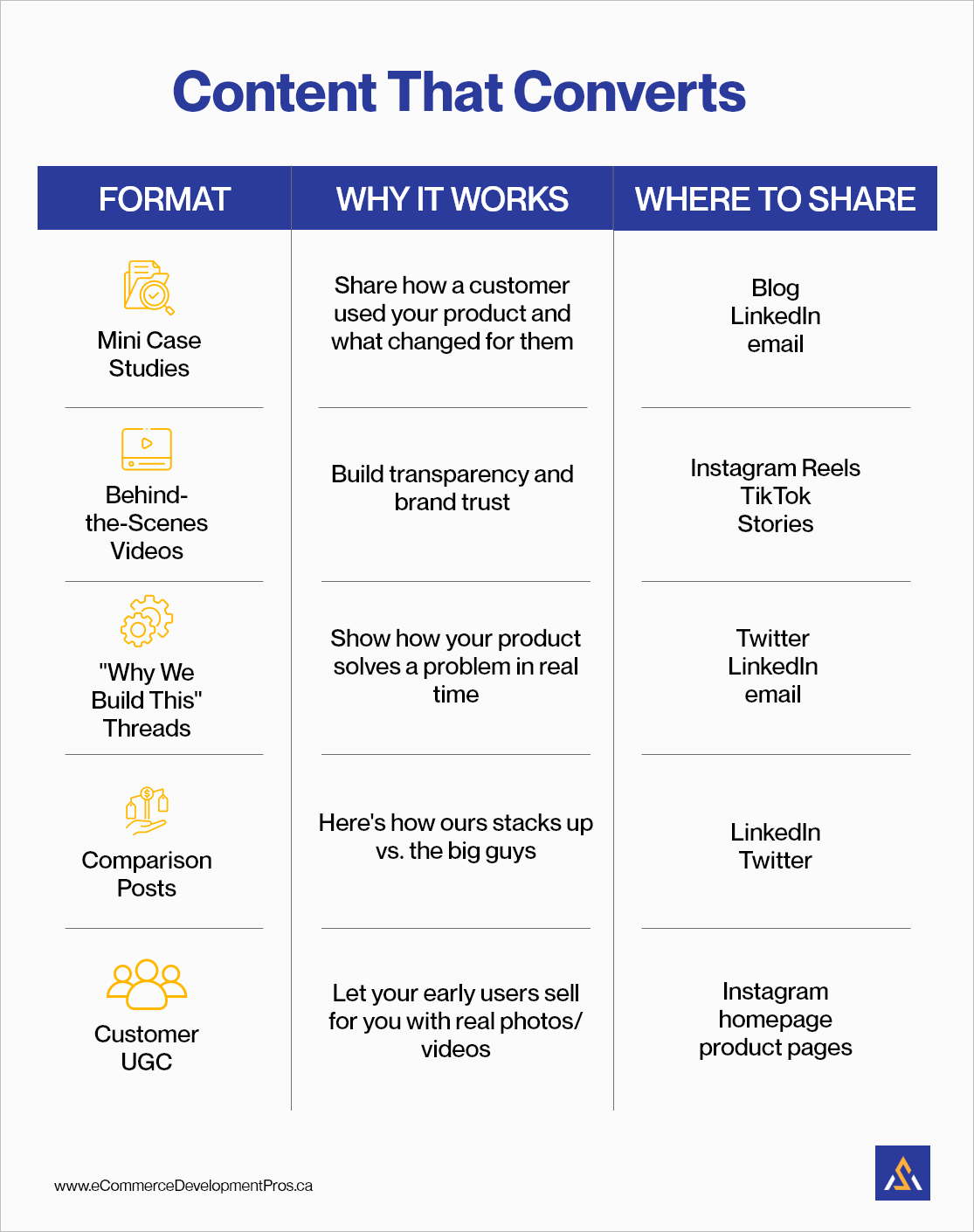
Why This Type of Content Converts
- It builds trust fast. You’re not telling people to buy—you’re showing them why it’s worth it.
- It gives potential customers context. Real-life use > fancy product copy.
- You can use one piece in multiple places. Turn one idea into a tweet, reel, blog snippet, and email.
- It doesn’t need to be perfect. In fact, raw and honest often perform better than over-polished.
7. Leverage Referral Programs
You don’t need fancy software or viral widgets to get people talking about your store. Sometimes, all it takes is a clear, simple ask and a little incentive.
People love to share good finds, especially if there’s a perk in it for them.
So instead of waiting for word-of-mouth to magically happen, give your early customers a nudge.
Here’s How to Make Referrals Work for You
- Start manual and simple.
- No need to integrate anything complex at this stage.
- Offer a small, meaningful reward.
- “Get 15% off your next order for every friend you refer.”
- “Invite 3 friends, get a free bonus product.”
- “We’ll donate $5 to [cause] when your referral makes a purchase.”
- Use tools only if needed:
- ReferralCandy
- Viral Loops
- Or even just a Google Form + email follow-up
- Promote your referral ask:
- Add it to your order confirmation email
- Include a note in your packaging
- Mention it on social or via a short email campaign
Example Message to Send Customers:
Hey [Name],
Thanks for your order!
If you know someone who’d love our product, send them this link—when they buy, you’ll both get 15% off.
Easy win for everyone 🙌”
Why Referrals Hit Different
- Word-of-mouth > any ad you could pay for
People trust their friends more than your product page. - You activate your early customers as promoters
It makes them feel part of something and rewards them for it. - It’s low-effort, high-reward
You don’t need 1,000 referrals. Even 5–10 can help you hit that first 100-customer goal.
Pro Tip: Reward Both Sides of the Referral
Want people to share your store? Make it worth it for them and their friend.
Instead of just giving a discount to the referrer, offer something to the person they bring in, too.
Example:
- Referrer: 15% off next order
- Friend: 10% off first purchase
This creates a win-win loop and lowers the friction for new customers to say “yes” when they land on your store for the first time.
8. Turn Early Buyers Into Brand Evangelists
Your first 5–10 customers are more than just revenue—they’re your first community, your first testimonials, and maybe your first marketing team (if you treat them right).
It’s easy to move on after someone buys, but this is the best moment to build a real connection. If you surprise and delight them, they’ll stick around and tell others.
Turn First Buyers Into Loyal Fans Like This
- Send a personal thank-you message.
DM them on Instagram, reply to their order email, or even write a hand-signed note. - Ask for feedback—genuinely.
“How did the product feel when it arrived?” or “Anything we could make better?” - Invite them to share.
Give them an easy way to tag you in a post or send a pic.
Bonus: include a branded hashtag or a small incentive (“Tag us and get 10% off your next order!”) - Feature them.
Post their photo on your socials. Add a quote to your homepage. Turn their story into a mini blog post or case study. - Make them feel part of your journey.
Share behind-the-scenes updates, invite them to test new ideas, or include them in your product roadmap if relevant.
Message Example:
Hey [Name],
I just wanted to say thank you for being one of our very first customers. I’m so grateful. If you’re up for it, I’d love to feature your story or even just a quick thought on what you liked about the product!
Pro Tip: Make It Easy to Share
Your customers want to support you, but don’t make them do extra work.
Provide a simple share link, pre-written caption, or tag suggestion.
Example:
“Loved your purchase? Snap a pic and tag @yourbrand with #first100crew—we feature our favs every week 🙌”
Why Your First Few Customers Are Gold
- People love being early.
Let them feel like insiders, not just shoppers. - Social proof sells.
Real photos and stories outperform polished product photos any day. - Small gestures go a long way.
A DM or shoutout can turn a one-time buyer into a loyal advocate who keeps bringing in others.
9. Tap Local or Niche Events (Even Virtual Ones)
Online marketing is great—but sometimes, a real connection beats reach.
Especially when you’re new, showing up in person (or virtually, with your face and story) can help people remember you, trust you, and root for your store. Online marketing is great—but sometimes, a real connection beats reach.
And the best part?
You don’t have to “pitch” to make it work.
This is about showing up, connecting authentically, and letting curiosity do the rest.
How to Make Events Work Without Selling
- Look for events where your audience naturally gathers:
- Local makers’ markets, pop-ups, or craft fairs
- Community meetups (fitness, eco-conscious living, parenting, etc.)
- Online events: webinars, Instagram Lives, Twitter Spaces, niche Zoom gatherings
- Don’t go to sell—go to connect.
- Talk about your story, not your product pitch.
- Bring samples if appropriate, but don’t shove them into hands.
- Offer value at the event.
- Host a small workshop (“How I built an eco-friendly brand with $0 ads”)
- Show your product in action or explain your creative process
- Answer questions genuinely—even if they don’t lead to an immediate sale
- Follow up after.
- Grab their social handles or email addresses from interested people.
- Send a personal follow-up saying, “Hey, great chatting with you at [event]!”
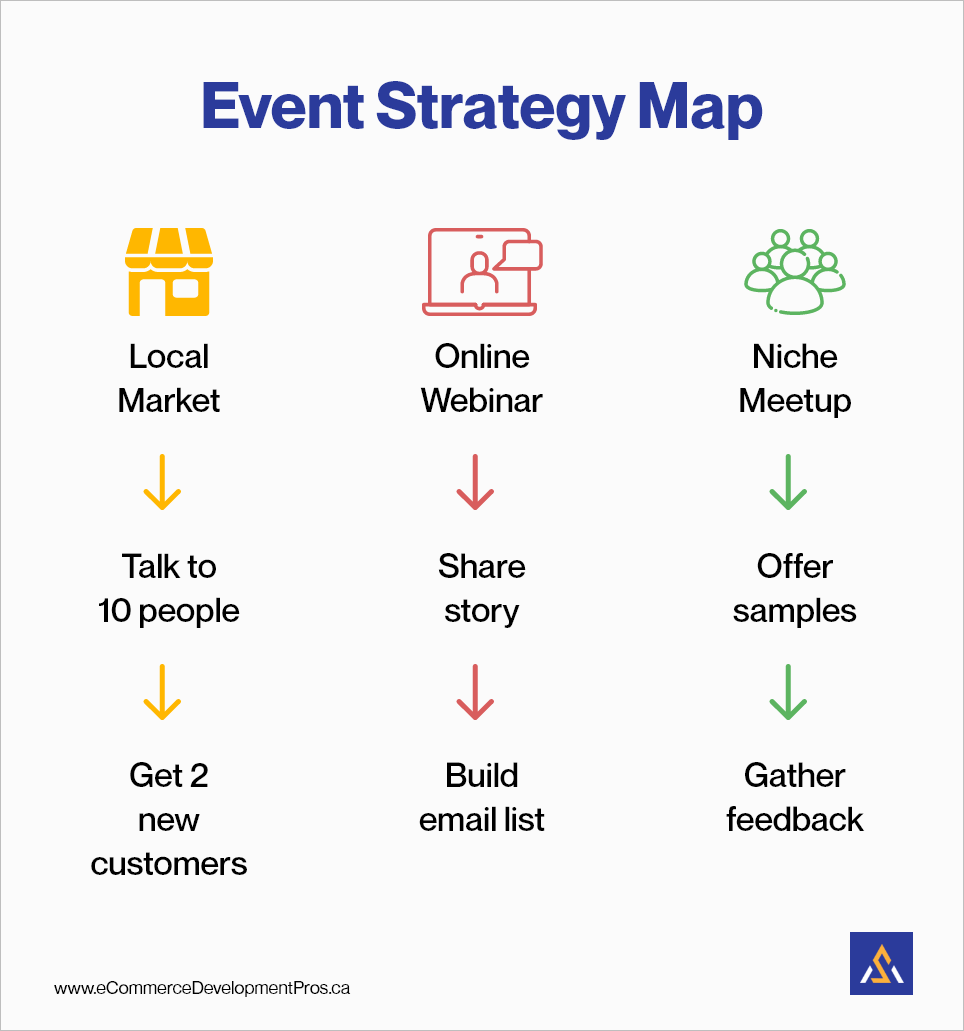
Pro Tip: Bring a Story, Not a Script
You don’t need a sales pitch—you need a conversation starter.
People remember stories way more than product specs.
Try something like:
“I started this brand because I couldn’t find [X that solved a real problem]. I figured others might be struggling with the same thing.”
Short, honest, and relatable always wins
Why Being Present Builds Trust Faster Than Posts
- People buy from people.
Face-to-face (or face-on-Zoom) builds instant trust. - You stand out.
Most brands don’t bother with community—those that do are remembered. - You get real-time feedback.
You’ll learn how people talk about your product, what excites them, and what questions they ask, which helps everywhere else too.
10. Create a “Founding Customer” Offer
Everyone loves to feel like they’re part of something early.
So instead of asking strangers to “just buy,” invite them to become part of your origin story.
Founding customer offers are a powerful way to turn curiosity into action because people love being first when it feels exclusive, collaborative, and meaningful.
Make Early Customers Feel Like Insiders
- Create a limited, early-access experience.
Offer a special deal or bundle only for your first 10, 25, or 50 customers. - Make it feel like a partnership, not a transaction.
You’re not just giving them a discount—you’re giving them influence. Let them help shape the future of your store. - Include personal touches:
- A handwritten thank-you note
- A shoutout on your socials or site
- A lifetime discount for being “first”
- Early access to future drops or beta products
- Give it a name.
Something like “Founding Circle,” “Beta Crew,” or “First100 Club” makes it feel legit and exclusive.
Example Message or Page Copy:
We’re looking for 25 founding customers to help us shape the future of [your store name].
You’ll get:
✅ Early access
✅ Featured on site/social
✅ Direct feedback loop
Want in?
Pro Tip: Give This Offer a Deadline
Create urgency with a cutoff:
- “Only the first 25 customers.”
- “Ends Friday at midnight.”
- “First 10 get our limited pre-launch bundle.”
People act faster when the window feels like it might close.
How Exclusivity Builds Loyalty From Day One
- It flips the script.
You’re not asking for help—you’re offering early access to something exciting. - It creates a community, not just customers.
These early folks are more likely to stick around, refer others, and feel invested in your success. - Scarcity and status drive action.
People love being “in early” when it’s framed the right way.
11. Collaborate With Complementary Brands
You don’t need a huge audience—you just need to tap into someone else’s.
Partnering with other small brands that share your values and customer base (but don’t compete with you) is one of the smartest, fastest ways to grow your exposure.
It’s like a trust shortcut: if people already like them, and they like you, you’re in.
How to Create Win-Win Brand Collabs
- Find brands that serve the same customer from a different angle.
Think:
- Your handmade candle store + a local pottery shop
- Your organic snack brand + a wellness blogger’s meal prep kit
- Your eco cleaning line + a brand that sells plant-based skincare
- Start with low-effort collaborations:
- Share each other in newsletters
- Shoutouts on social media
- Co-host an Instagram Live or joint giveaway
- Bundle your products together for a limited offer
- Reach out with a win-win pitch.
Make it easy for them to say yes. Highlight what you’ll handle (the creative, setup, promo, etc.).
Example Outreach Message:
Hey [Brand Name],
I’m a huge fan of your [product]. Our audiences are super aligned—I’d love to collab on a fun giveaway or social swap. I can take care of all the creative and promo.
Let me know if you’re up for a quick brainstorm!
Pro Tip: Go Local or Micro
Some of the best partnerships happen close to home.
Reach out to:
- Local makers on Instagram
- Indie newsletter writers
- Small batch brands on Etsy
They’re often more responsive and open to creative cross-promotion.
What Makes These Partnerships So Effective
- It multiplies reach without multiplying cost.
You both get exposure to new audiences, without paying for ads. - It builds brand trust instantly.
A recommendation from a known brand is worth 10 cold pitches. - You’re doubling your credibility.
When customers see you together with other quality brands, it says: we belong.
12. Use Scarcity & Urgency Smartly
Let’s talk FOMO.
People don’t just buy because they want something—they buy because they’re afraid of missing out.
And when you’re launching something new, that fear of missing out can be your best friend.
Scarcity and urgency—when done with honesty—give people a reason to stop scrolling and act now instead of thinking, “I’ll come back to this later.”
How to Use FOMO Without Feeling Pushy
- Set clear limits that make the offer feel real and time-sensitive:
- Use countdowns or progress indicators:
- “18/25 spots claimed”
- “Last 4 bundles left”
- Add a countdown timer to your landing page or emails
- Make it feel exclusive, not desperate:
- “We’re keeping this small to stay personal.”
- “This round is for early supporters only.”
- Stick to your deadlines.
If you say it ends Friday, don’t quietly keep it open until Monday. People will stop trusting your offers.
Example Copy
We’re capping this to just 25 customers so we can personally follow up with each one.
Doors close Friday night—or sooner if we sell out first.
The Psychology Behind Scarcity
- People hate missing out, and urgency helps them make a decision instead of sitting in “maybe later” limbo.
- It makes your product feel more valuable.
- Scarcity isn’t just for conversions—it also helps you manage inventory, capacity, and support while you’re still growing.
13. Document Your Journey Publicly
No audience? No problem.
You don’t need thousands of followers to start building momentum—you just need to show your work. When you document your journey in public, you invite people to follow along, root for you, and buy into the story behind your store.
This isn’t about being an influencer. It’s about being real, consistent, and visible.
Easy Ways to Build in Public (Even With 0 Followers)
- Pick one channel to share your progress regularly.
Choose what feels natural—Instagram, Twitter/X, LinkedIn, TikTok, even an email list. - Post simple, honest updates:
- “Packing our first 3 orders today!”
- “Just launched our homepage—what do you think?”
- “Making a tough decision between two packaging designs…”
- Mix in photos, short videos, or screen recordings.
Show your face, your workspace, or your process—it makes people feel connected. - Engage with people who respond.
Thank them, ask questions, or start conversations. This isn’t a broadcast—it’s a build-in-public community.
Why Sharing Your Process Attracts the Right People
- It builds trust before you ask for a sale. People follow first, then buy.
- It humanizes your brand. You’re not just a store—you’re a story people want to be part of.
- It creates compounding visibility. Even if no one engages today, your consistency pays off over time.
Lessons From Founders Who’ve Done It
Still wondering if this scrappy, non-paid approach works?
Here are a few real-world examples that show how founders, just like you—got their first customers by leaning into story, community, and resourcefulness instead of big budgets.
1. Notion: Community-Led Growth
✅ Tactic used: Community engagement + user-generated content
✅ What you can learn: Encourage your early users to contribute and share their experiences, creating a community around your product.
2. Buffer: Validate Before You Build
Buffer began with a simple landing page to gauge interest before building the full product. By collecting emails and feedback upfront, they validated their idea and secured their first paying users within weeks.
✅ Tactic used: Idea validation + content-first approach
✅ What you can learn: Launch before you’re ready. Use a basic landing page to test interest and gather feedback.
3. Pantee: Sustainable Fashion with a Story
Sisters Amanda and Katie McCourt launched Pantee, an underwear brand made from deadstock t-shirts, during the pandemic. By highlighting their commitment to sustainability and sharing their mission-driven story, they attracted a dedicated customer base.
✅ Tactic used: Mission-driven branding + storytelling
✅ What you can learn: Align your brand with a meaningful cause and communicate it effectively to resonate with customers.
Start Small, Start Now
Here’s the truth: you don’t need ads, a big following, or the “perfect plan” to get your first 100 customers.
You just need to show up, stay consistent, and take one step at a time.
👉 Pick 2–3 tactics from this post. Do them this week.
Start with what feels doable, not what looks impressive.
You’ve Got This
No response after online store launch? Totally normal.
Feeling invisible? We’ve all been there.
But the brands that win are the ones that keep going when no one’s clapping yet.
And now? You’ve got 13 proven ways to find your people, grow with intention, and turn quiet interest into loyal customers—without burning cash or losing heart.
Let your first few customers be your best growth hack.
Because once they show up, they’ll help bring the next 10, the next 50… and before you know it, your store isn’t “new” anymore—it’s thriving.


